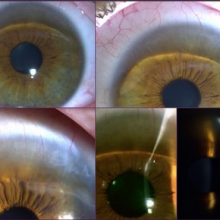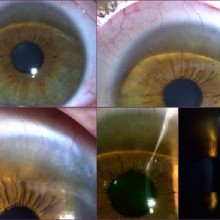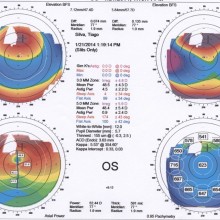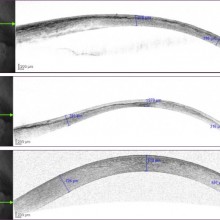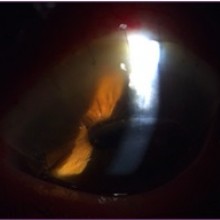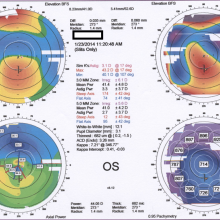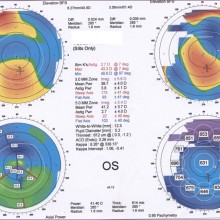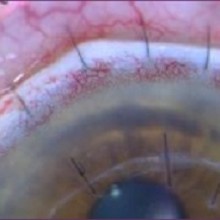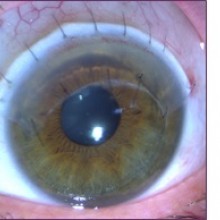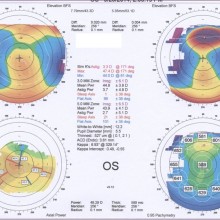Ring-shaped corneoscleral lamellar keratoplasty for Terrien's marginal corneal degeneration
The patient is a 30 year old male who was followed on our clinic, on a outpatient basis, with a diagnosis of Terrien's marginal corneal degeneration.
He complained of progressive, painless, diminished visual acuity of his left eye.
No relevant personal or familiar medical history
Uncorrected visual acuity was 12/10 on the right eye and counting fingers on the left eye. With a spectacle correction of 0,50 (-4,00 x 90º), visual acuity of the left eye improved to 5/10.
slit-lamp examination of the right eye was unremarkable.
On the left eye the cornea presented a crescent shaped superior thining, reaching from 10h to 2h, with extensive deep and superficial neovascularization. The remaining anterior segment presented no significant changes.
Stereoscopic view of the fundus showed no signs of retinal disorders bilaterally.
Anterior segment OCT exam was performed using the SL-OCT device (Heidelberg Engineering).
Topographic evaluation was performed with the Orbscan II device (Bausch & Lomb).
Partial Lamellar Keratoplasty
The edited video displaying the surgery can be assessed in the Video Gallery section, under the title "Ring-shaped corneoscleral lamellar keratoplasty for Terrien's marginal corneal degeneration"
On the first post-operative day, firm attachment of the graft and a formed anterior chamber were noted.
Best corrected visual acuity was 7/10 with a correction of (-4.00 x 105º).
After a follow-up of 4 months, corneo-scleral graft remains in position. No episode of acute rejection ocurred.
Best corrected visual acuity remains at 7/10 with a correction of -1.00 (-2.50 x 85º).
Wang T et al. Ring-shaped corneoscleral lamellar keratoplasty guided by high-definition optical coherence tomography and Scheimpflug imaging for severe Terrien’s marginal corneal degeneration. Graefes Arch Clin Exp Ophthalmol (2012) 250:1795–1801
Gao H et al. Partial lamellar keratoplasty for peripheral corneal disease using a graft from the glycerin-preserved corneoscleral rim. Graefes Arch Clin Exp Ophthalmol. Published online: 6 May 2014




